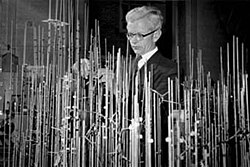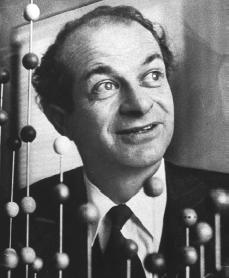B

- David Baker (American, 1962–) — Protein structure prediction; protein design; Rosetta software
- Adriaan (Ad) Bax (Dutch-born American, 1956–) — development of methodology for NMR (Nuclear magnetic resonance) spectroscopy
- Georg von Békésy (Hungarian, 1899–1972) — research on the human ear [1]
- Boris Pavlovich Belousov (Soviet, 1893–1970) — known for discovery of Belousov–Zhabotinsky reaction
- Howard Berg (American, 1934–2021) — characterized properties of bacterial chemotaxis
- Helen M. Berman (American, 1943–) — pioneer in study of nucleic acid structure; head of the worldwide Protein Data Bank
- John Desmond Bernal (Irish-born English, 1901–1971) — X-ray crystallography of plant viruses and proteins
- Pamela J. Bjorkman (American, 1956–) — first X-ray crystallography of human histocompatibility complex; studies immune recognition, homologs of MHC proteins, and improved antibodies against HIV
- Steven Block (American, 1952–) — observed the motions of enzymes such as kinesin and RNA polymerase with optical tweezers
- Tom Blundell (British, 1942–) — crystal structures of HIV protease, renin, insulin and other hormones, growth factors, receptors, and proteins important in cell signalling and DNA repair; developed structure-guided and fragment-based approaches to drug design
- Jagadish Chandra Bose (Indian, 1858–1937). Known for research on microwaves and plant growth [1]
- Detlev Wulf Bronk (American, 1897–1975). Administrator known also for research on nerve conduction. [1]
- Axel Brunger (German American, 1956–) — developed the free R cross-validation index and the X-PLOR/CNS software for macromolecular crystallography
- Carlos Bustamante (Peruvian-born American, 1951–) — known for single-molecule biophysics of molecular motors and biological polymer physics








